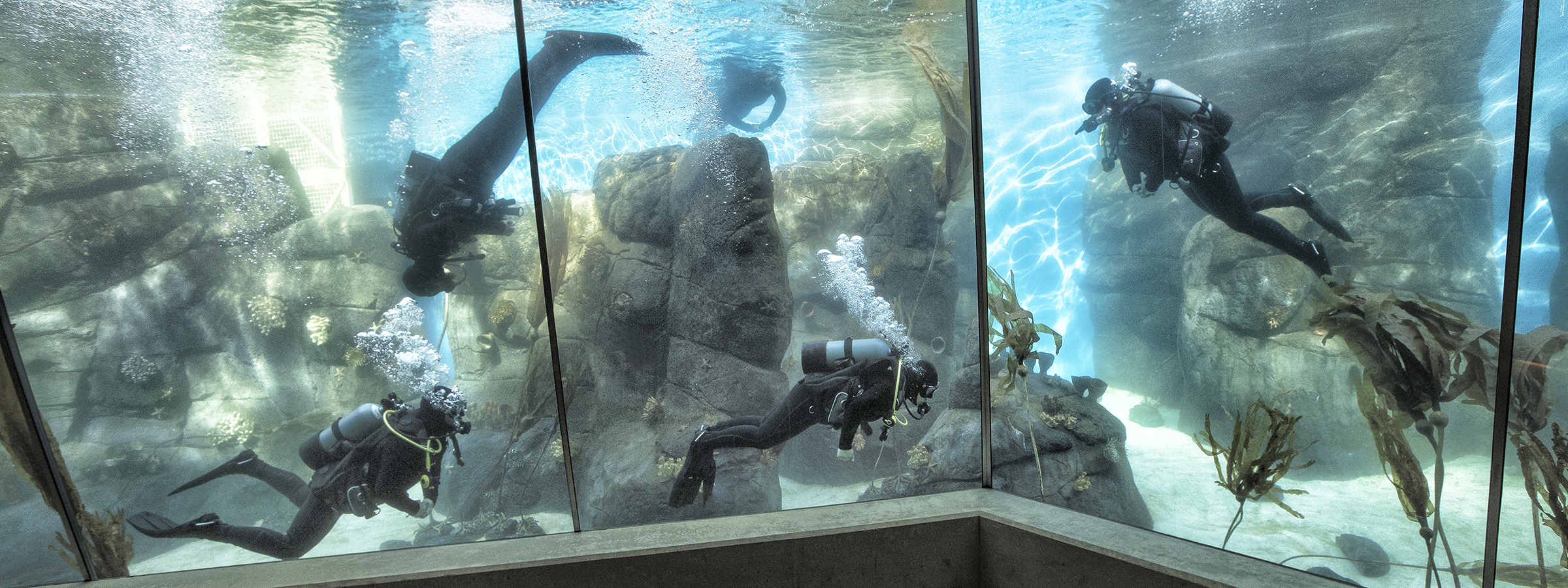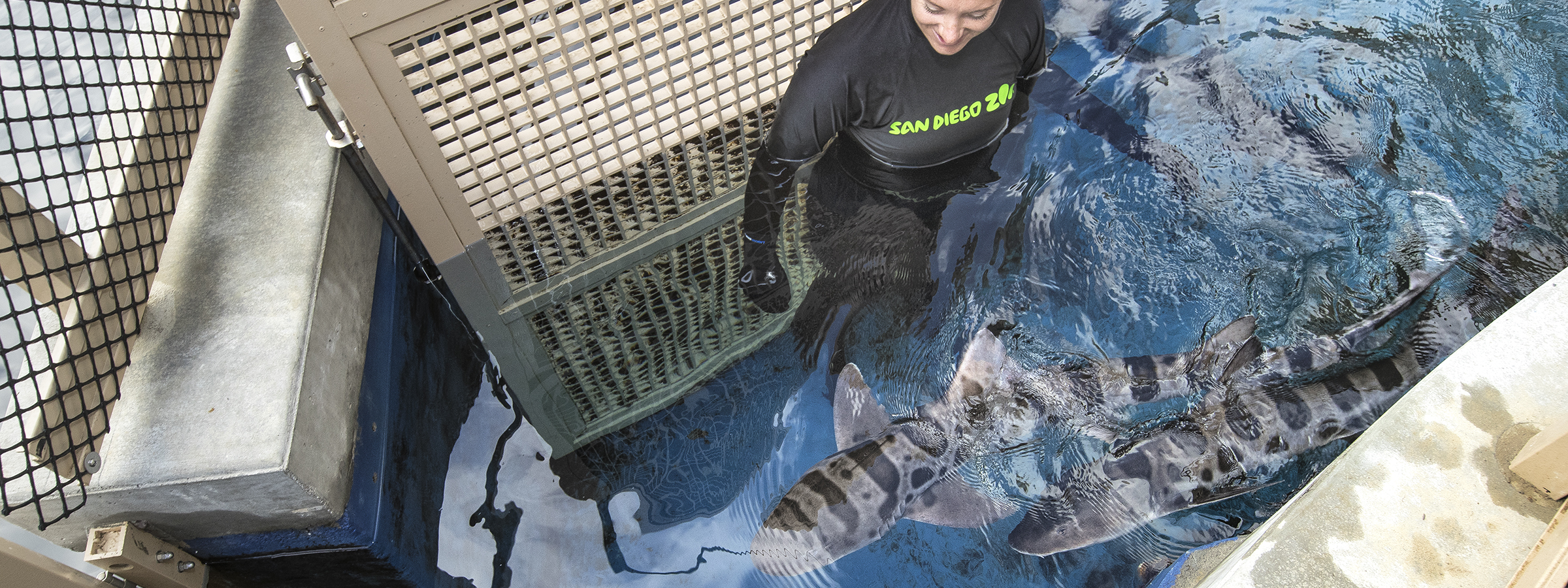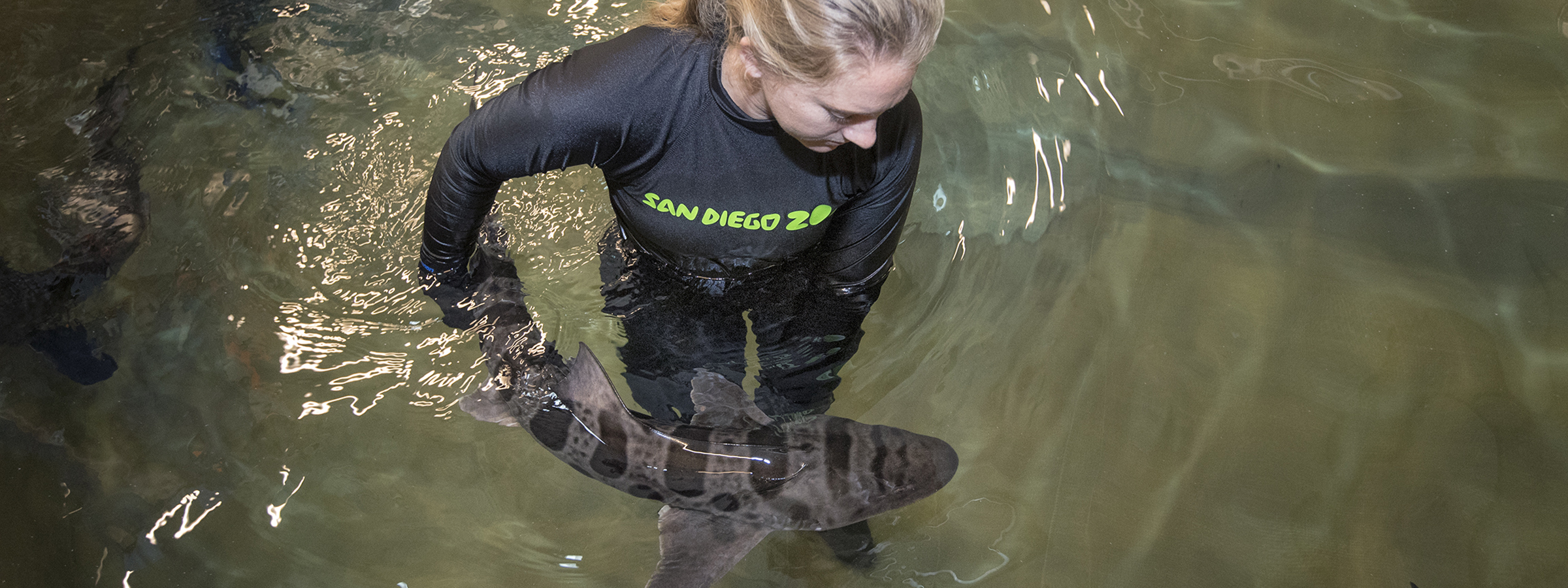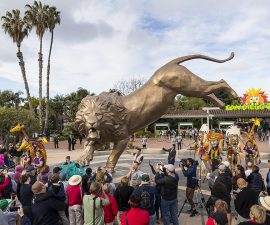BY Wendy Perkins
Photography by Ken Bohn
Watching the penguins of Conrad Prebys Africa Rocks zip and zoom through their pool, you may be surprised to see some other life forms in the water: sharks and human divers. But don’t worry—everyone gets along in this kingdom. The divers are specially trained keepers who care for the California leopard sharks, which are similar to shark species that African penguins share space with in the waters off Namibia and South Africa.

 The length in feet an adult female leopard shark can reach; males are slightly smaller.
The length in feet an adult female leopard shark can reach; males are slightly smaller.
Diving In
The Zoo’s herpetology department is charged with tending the fish in various Zoo exhibits. The nine keepers responsible for the sharks’ well-being expressed an interest in diving (literally and figuratively) into the husbandry of this new-to-the-Zoo species. Servicing an animal’s habitat—in this case a deep and watery one—is an important part of animal husbandry. Step one: dive training.
Throughout 2016, while the Dan and Vi McKinney Peguin Habitat took shape in Africa Rocks, the shark team worked on dive skills and safety protocols in an off-grounds swimming pool. In May 2017, before any animals moved in, the shark keepers began using the new pool at the Zoo. In addition to getting acclimated to moving among the rocks, accessing nooks and crannies, the team practiced dive safety drills.

 The number of young in a litter.
The number of young in a litter.
Schooling Sharks
Health monitoring is a key aspect of maintaining thriving animals. At both the Zoo and the Safari Park, keepers use positive reinforcement training to establish a relationship with many animals to allow for close inspection and a range of health procedures. The shark keepers have followed this approach. Some people might think training a shark is a fish tale, but truth is stranger—and more surprising—than fiction in this case.
“Leopard sharks are pretty easy to work with,” says Amanda Chapin, one of the sharks’ keepers. “They are curious by nature, and quite food motivated,” she added, traits that make them trainable. Training began with the keepers holding a target (a pole with a red ball at the end) and a piece of fish (held in long tongs) in the water next to the ball. Drawn to the scent of the fish, the shark learns to associate food with the target. When the sleek swimmer touches the target, it gets the scaly reward. With the target/food connection solidified, keepers can ask the shark to move from one spot to another. This makes it possible for the keepers and veterinarians to see the animals up close from the side of the pool. Amanda points out the practicality: “when you have a big pool, you can’t just go get an individual easily. Training allows us to care for the animals without adding undue stress.”

 Months gestation for young; embryos are sustained by yolk sacs within the mother’s body until birth.
Months gestation for young; embryos are sustained by yolk sacs within the mother’s body until birth.
Going Deeper
The targeting behavior also allows keepers to make sure each individual shark gets the right amount of food. Can keepers really tell the sharks apart? Yes! Although they all have spots, the patterns have slight differences. “It’s just like you saw two Dalmatian dogs together,” says Amanda. “They might look alike to you at first, but their owners, who see them all the time, can tell them apart easily.” Try it yourself—see if you can spot individual patterns on the sharks when you visit Penguin Beach.
The sharks have different personalities, as well. “Some will bump into you to see what you’re doing,” Amanda shared. “Others aren’t interested unless you have food.” Special equipment allows keepers to offer short educational talks from inside the pool. Watching the sharks and humans together highlights the gentle nature of leopard sharks, and the depths keepers go to give them optimum care.





